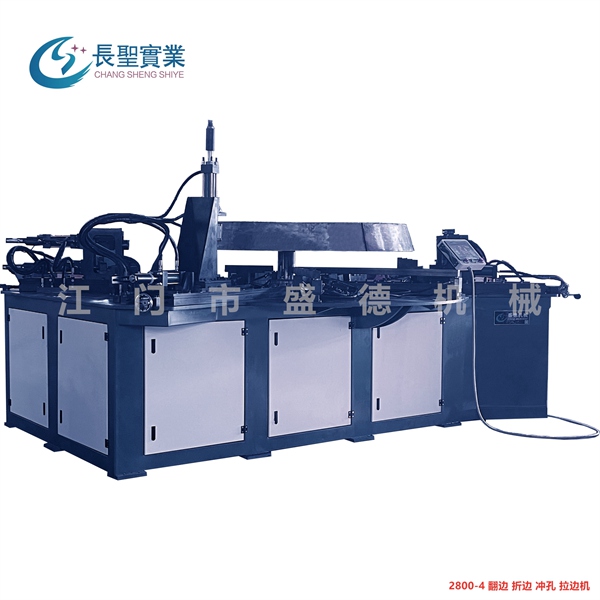
Flanging machines have remarkably evolved from manual to advanced computer numerical control (CNC) automation. The impact of this transformation has been a reshaping of the metal fabrication industry with higher precision, efficiency and versatility in the flanging process.
Manual To Mechanical:
Initially, flanging was a manual process requiring skilled operators who would manually manipulate pieces of metal using hand tools or simple mechanical devices. However effective, it was labor intensive, time consuming and had limited precision, as well as repeatability.

Introduction Of Mechanical Flanging Machines:
Mechanical Flanging Machines marked a major milestone in metal fabrication technology. Utilization of these machines that operated through mechanical power led to fast results thus increased efficacy compared to manual methods. Nevertheless, mechanical Flanging Machines depended on human adjustments hence had no accuracy like those made by modern CNC systems.
CNC Automation:
The rise of computer numerical control (CNC) technology is leading to the revolution within the flanging world bringing with it an era of automation and precision. CNC controlled flangers have programmable logic controllers along with servo motors that can help accurately operate during flanger operations. With high levels of accuracy and repeatability CNC machine operators are able to program any task that involves extensive flagging thereby reducing errors made by people ensuring constant quality.
Impact On Productivity And Quality:
The transition from mechanized production to automated production using CNC’s leaves lasting impact on productivity and product quality among many others in the metallic fabricating industries. These CNC-controlled machines are able to work continuously and independently which translates into maximum throughput and minimum down time for such facilities. Furthermore, as result of use of CNC systems, accuracy levels may be improved leading into higher-quality parts having narrower tolerance ranges thus lowering wastage as well as rework.
Versatility And Flexibility:
There is no limit or bounds for latest versions of CNC flangers which demonstrate an unmatched ability to work with different materials, thicknesses and geometries. Through the advanced features like multi-axis control, tool changers and adaptive programming, CNC machines can quickly adjust to a wide variety of production demands.
The transition from manual process to CNC automation of Flanging Machines is a critical point in metal fabrication history. The use of CNC-controlled flangers has revolutionized the manner in which flanged parts are made through cutting-edge technology that enhances efficiency, quality and flexibility in the production of metallic products.